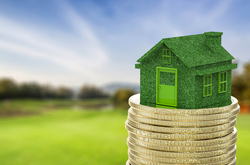Home green home: financing the way to a more environmentally friendly Europe
The vast majority of Europe’s buildings are residential. Since many of these dwellings were built before the introduction of energy performance regulations in the 1970s, they aren’t very energy efficient. In fact, an overwhelming 97 % of Europe’s buildings are considered to be poor energy performers. What’s more, 40 % of the EU’s energy consumption and 36 % of its CO2 emissions can be laid at the doorstep of these buildings. Even more worryingly, more than three quarters of the current dwellings are expected to still be standing in 2050. Giving citizens incentives to improve the energy efficiency (EE) of their buildings is therefore a vitally important step in the EU’s efforts to mitigate climate change. Launched in 2017, the EU-funded EeMAP project is working to promote easy access to EE mortgage products that will lead to the renovation of millions of buildings throughout Europe. The initiative is based on the realisation that banks have a crucial role to play in supporting the EU’s energy savings targets. According to Michael Lewis, CEO of project partner E.ON UK, the absence of easily accessible and affordable finance prevents homeowners from enjoying the lower costs, higher property values and greater comfort of energy-efficient homes. “Easier access to affordable financing via an energy efficient mortgage should provide an added incentive for customers to better insulate buildings, replace old heating systems or increase their energy independence through solar panels, batteries or virtual storage,” he states in an EeMAP report. Energy efficiency mortgages in pilot phase As part of their strategy, project partners have developed an Energy Efficient Mortgages Framework that consists of a set of guidelines for EE mortgages. The Framework is being tested under a pilot scheme that was launched in June 2018. Around 40 major European banks and more than 20 supporting organisations are taking part in the pilot scheme. The participating banks are exploring the possibility of providing lower interest rates for mortgages that meet the scheme’s EE criteria. The entire initiative is based on two key assumptions. The first is that improving a property’s EE will increase its value and therefore reduce the bank’s asset risk. The second is that energy savings will lead to more disposable income in greener households. This means that borrowers will be less likely to default on their loans, consequently also reducing a bank’s credit risk. These gains will be reflected in the incentives offered to borrowers, such as lower interest rates and higher loan amounts. “[E]nergy efficient mortgages have the potential to be a game changer in the delivery of affordable finance and we are ready to meet the challenge for home-owners motivated to take the step into energy efficient living,” says Lewis in the same report. EeMAP (Energy efficient Mortgages Action Plan) plans to use the feedback from the pilot scheme to improve building performance criteria over time. The project also aims to use the resources at its disposal to promote the benefits of energy efficient mortgages for people, the economy and the planet. For more information, please see: EeMAP project website
Countries
Belgium



